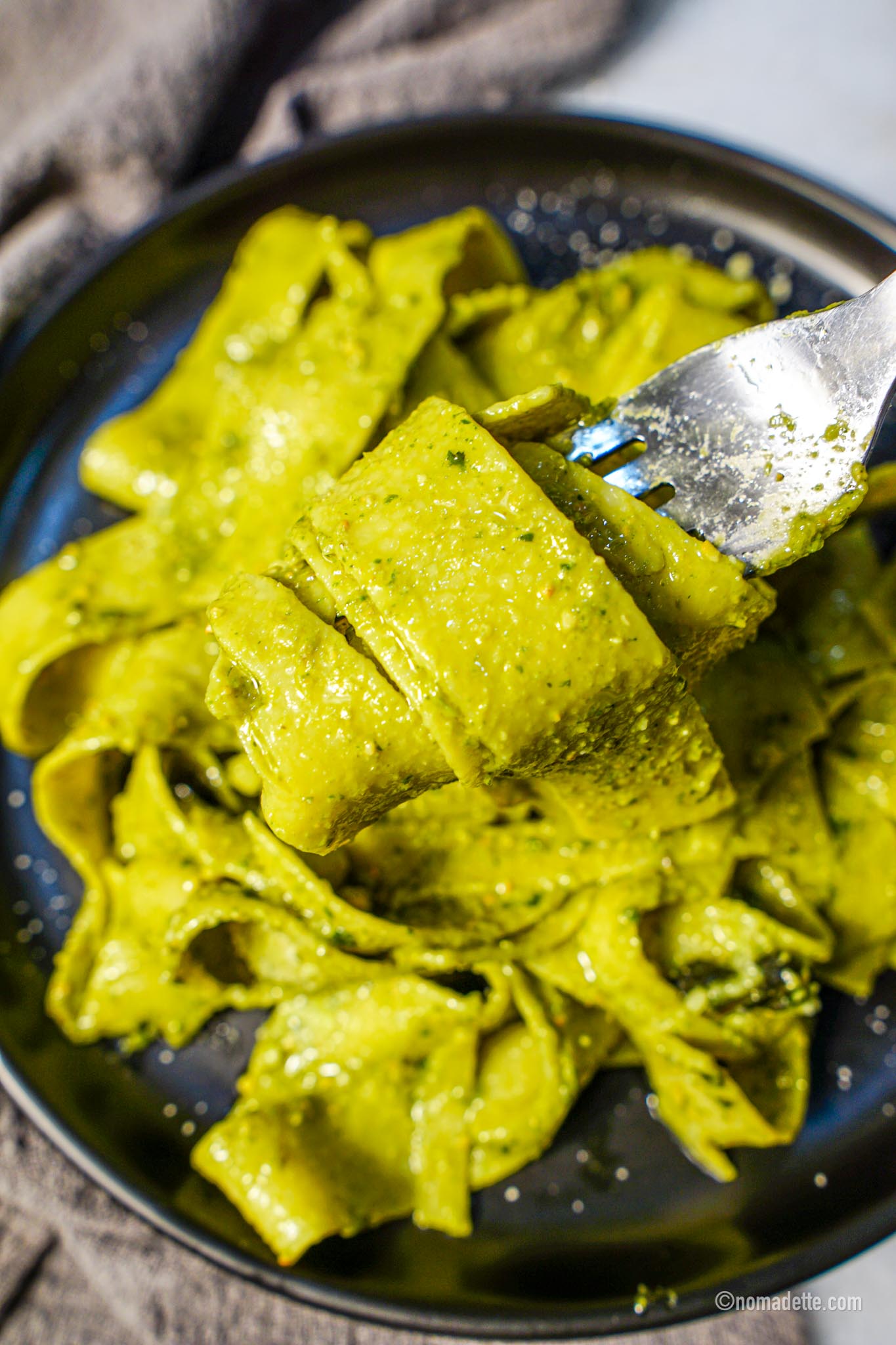Craving comfort food in a flash? Make this easy Soondubu Jjigae Noodle Dish. A flavourful, spicy Korean stew with tofu and glass noodles, ready in less than 30 minutes!

If you’re a fan of comforting, spicy Korean soups, then you’re going to love this rendition of Soondubu Jjigae (Korean soft tofu stew). I love Soondubu Jjigae with rice, but sometimes I don’t have the energy to make some… or I just feel like a different kind of carbs! In those times, I add glass noodles to the pot and tada – we have a full meal effortlessly. This easy Soondubu Jjigae Noodles combines the rich, savoury flavours of the classic Korean tofu stew with the delightful texture of glass noodles. Perfect for a cozy meal at home, this dish is a must-try for anyone looking to explore Korean cuisine or simply craving something warm and satisfying.
Soondubu Jjigae is a traditional Korean stew made with soft tofu (soondubu), vegetables, and often seafood or meat, simmered in a flavorful broth seasoned with gochugaru (Korean red chili pepper flakes). It’s known for its comforting and hearty qualities, making it a popular dish, especially during colder months.
Why You’ll Love This Recipe
- Quick and Easy: Ready in under 30 minutes, making it a great weeknight dinner option.
- Flavourful: Rich, spicy broth with a savory depth from dashi stock, soy sauce, and fish sauce.
- Versatile: Can be easily adapted with your favourite vegetables or protein.
- Nutritious: Packed with protein from tofu and eggs, and nutrients from enoki mushrooms (or your vegetable of choice!)
Key Ingredients for Soondubu Jjigae Noodles
- Glass Noodles: Or mung bean vermicelli to add a satisfying texture to the stew. Glass noodles are typically sold in a dried form, in bundles. Each bundle may look small, but they will expand as they cook and absorb liquid! Vermicelli rice noodles will work as well. Wheat or floury noodles will not work as well as they turn the soup starchy.
- Soft Tofu: Soft or silken tofu also known as soondubu is the star ingredient here!
- Egg: For added richness and protein.
- Enoki Mushrooms: Adds a chewy texture and flavour, and of course added nutrients to the dish! You can replace with your favourite veggies such as carrots, cabbages or beansprouts!
- Stock: Dashi, chicken or seafood stock provides a richer flavour. I like using dashi for that extra layer of umami, see my post on Soondubu Jjigae for directions on how I make my homemade dashi stock.
- Garlic: The main aromatic for soondubu jjigae – sometimes I like to add ginger and onion paste too! Adds a fragrant base to the soup.
- Gochugaru: Korean red chili pepper flakes for heat and colour.
- Fish Sauce: Adds depth and umami to the broth. You can also use light soy sauce, but do note fish sauce is saltier. Adjust the soy sauce to preference.
- Sesame Oil: This provides such a lovely, nutty aroma to the dish.
- Garnishes: Spring onion greens and sesame seeds for a fresh finish.
Key Steps to Making It
1. Sauté Aromatics

- Heat sesame oil in a pot over low heat. You can also use vegetable oil.
- Add garlic and ginger to the pan and saute until fragrant.
2. Add Gochugaru

- Then add the gochugaru, and stir continuously until fragrant and the gochugaru has absorbed the oil. A paste should form. Stir so that the gochugaru does not burn.
- You may need to add more oil, if there are still ‘dry’ chilli flakes in the pot after stirring.
3. Prepare Broth and Add Tofu

- Pour in the dashi stock and fish sauce. Stir to combine.
- Add the tofu at this stage as well to let it absorb as much of the broth. You can cut the tofu to preference, or simply spoon it in (my choice!)
- Bring to a boil over medium heat.
4. Add Mushrooms

- Once the broth boils, add enoki mushrooms.
- Simmer for about 5 minutes or until mushrooms are tender.
5. Add Glass Noodles & Eggs

- Wiggle in the dry glass noodles, and pour in beaten eggs. Stir the soup to distribute the egg scramble.
- Once the glass noodles are translucent and al dente (3-4 minutes, or according to the package instructions), the dish is ready.
6. Finish with Sesame Oil

- Turn off the heat and drizzle sesame oil over the soup.
- Top with sliced spring onion greens and sesame seeds.
- Serve immediately and hot!
How to Serve Soondubu Jjigae Noodles
Serve this Soondubu Jjigae Noodle Dish in a deep bowl to best contain the delicious broth and noodles… or if you’re making this for yourself, eat it straight for the pot!
If you’re still hungry after you’ve finished the noodles, dump in steamed rice for a more filling meal.
Tips and Tricks
- Adjust the Heat: If you prefer a milder stew, reduce the amount of gochugaru. For more heat, add a bit more or include some fresh chili slices.
- Protein Options: Feel free to add seafood like clams or shrimp, or thinly sliced beef, chicken or pork for added protein.
- Perfect Egg: For a runny yolk, cook the egg for just 2 minutes. For a firmer yolk, let it cook longer.
Storing and Reheating Instructions
Storing
Soondubu Jjigae Noodles are best eaten immediately, since the glass noodles loose their chewy, al dente texture when kept for long periods of time.
If you don’t mind this, store any leftovers in an airtight container in the refrigerator for up to 2 days.
Reheat
To reheat, simply warm it on the stove over medium heat until hot. I recommend adding a splash of stock or water, to thin out the broth if the noodles has absorbed too much of it!







